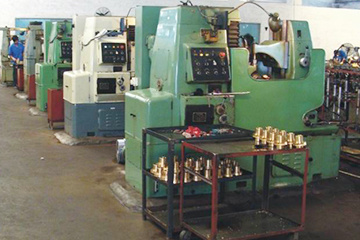Troubleshooting and Maintenance Skills of Reducer
Release time:
2024-03-15
Reducer is a common transmission equipment, widely used in industrial fields. However, due to long-term use or improper operation, various failures may occur in the reducer. This article will introduce several common troubleshooting and maintenance techniques to help you solve the reducer failure.


Reducer is a common transmission equipment, widely used in industrial fields. However, due to long-term use or improper operation, various failures may occur in the reducer. This article will introduce several common troubleshooting and maintenance techniques to help you solve the reducer failure.
1. abnormal noise fault
-
Cause analysis of abnormal noise: (1) Excessive gear clearance or wear causes tooth surface impact and noise; (2) Unbalance or misalignment of gears causes different degrees of vibration and noise; (3) Bearing damage or poor lubrication causes noise.
-
Absrtact: (1) Check and adjust the gear clearance to ensure that it is within the specified range. (2) Check the gear balance and concentricity, repair or replace. (3) Check the bearing condition, if there is any damage, it needs to be replaced in time, and strengthen lubrication.
2. temperature rise fault
-
Analysis of the causes of temperature rise: (1) The bearing is too tight or too loose, which leads to increased friction; (2) Poor lubrication or unqualified lubricating oil quality leads to increased friction; (3) Poor sealing of the transmission device leads to external dust entering.
-
Temperature rise treatment: (1) check the bearing tightness, adjust to the appropriate state. (2) Replace qualified lubricating oil and pay attention to regular replacement. (3) Strengthen the sealing performance of the transmission device to prevent dust from entering.
3. leakage fault
-
Leakage cause analysis: (1) seal aging or damage lead to leakage; (2) lubricating oil quality is unqualified or too much lead to leakage; (3) joint surface clearance is too large lead to leakage.
-
Leakage treatment method: (1) Replace the seal to ensure good sealing performance. (2) Control the amount of lubricating oil to avoid excessive use. (3) Check the clearance of the joint surface and adjust or replace it.
4. vibration fault
-
Vibration cause analysis: (1) Gear imbalance or wear leads to vibration; (2) Bearing damage or poor lubrication leads to vibration; (3) The foundation is not firm or the installation is inaccurate, which leads to vibration.
-
Vibration treatment method: (1) adjust or replace the gear balance; (2) check the bearing condition, if there is any damage, it needs to be replaced in time, and strengthen lubrication. (3) reinforce the foundation or reinstall the reducer.
The above is the common fault elimination and maintenance skills of reducer. In actual operation, these methods should be used flexibly according to the specific situation and ensure safe operation. At the same time, regular inspection and maintenance of the reducer can effectively extend its service life and improve work efficiency.
Foshan Yingyi Transmission Machinery Co., Ltd.
Related News






